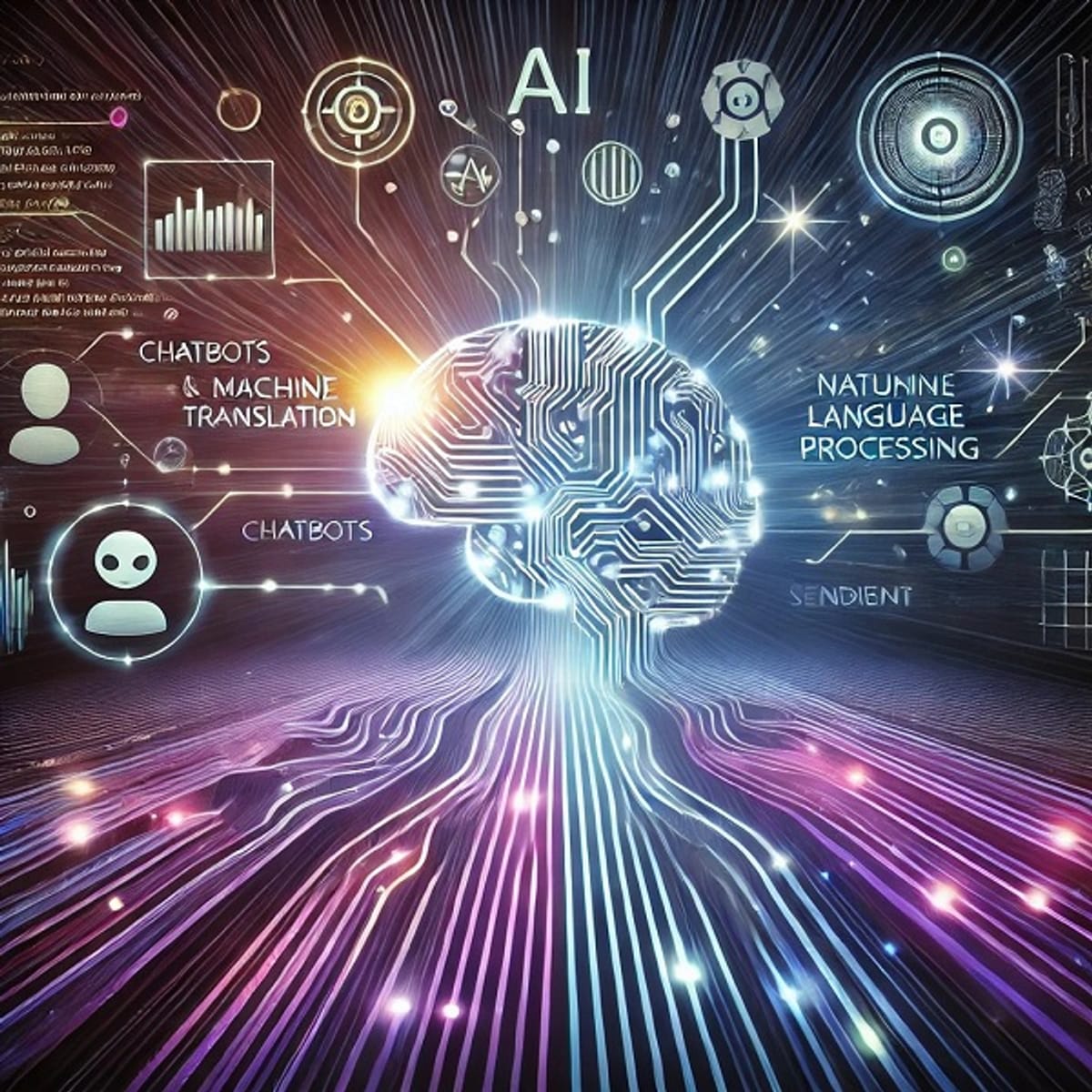Artificial Intelligence (AI) and Natural Language Processing (NLP) technologies are rapidly changing our lives. This article will explore how.
You likely use AI technologies daily without realizing it – through smartphones, search engines, and social media. This article will explain these technologies' principles, real-world examples, ethical concerns, and future prospects in a clear and comprehensive manner.
Specifically, keywords like AI, Machine Learning, Deep Learning, and Transformer models are naturally integrated, making it a valuable resource for those seeking information on these topics.
1. Technological Deep Dive and Principles
Key Components of Natural Language Processing
- Tokenization:
This is the first step, breaking down text into words, sentences, or smaller units (subwords). This allows computers to understand sentences.
Example Keywords: NLP Tokenization - Word Embedding:
This represents the meaning of words as numerical vectors. Popular methods include Word2Vec and GloVe, which allow for measuring the similarity between words. - Attention Mechanism:
This technique focuses on important words or parts of a sentence to understand the context. This helps AI capture nuances and key information more effectively. - Transformer Architecture:
This is the foundation of the most advanced NLP models today. Models like BERT and GPT utilize this structure, providing faster and more accurate contextual understanding than previous RNN or LSTM models.
Working Principle of the Transformer Model
The simple diagram below illustrates how the Transformer processes text:
NLP models go through multiple steps, from simple text segmentation to understanding context and deriving meaning.
2. Real-World Use Cases and Industrial Applications
Specific Examples
- Chatbots and Customer Service:
Many global companies are implementing conversational AI to provide 24/7 customer support.
For example, companies like Google and Amazon use AI chatbots to quickly respond to user inquiries.
Keywords: Chatbots, Conversational AI, Customer Service - Machine Translation:
Services like Google Translate and DeepL have significantly improved the accuracy of translation between multiple languages using AI.
This allows people around the world to exchange information without communication barriers.
Keywords: Machine Translation, AI Translation Services - Sentiment Analysis and Social Media Monitoring:
AI analyzes online reviews and social media data to understand consumer sentiment and aid in marketing strategy development.
Keywords: Sentiment Analysis, Social Media Analysis - Speech Recognition and Virtual Assistants:
Apple's Siri, Google Assistant etc., recognize voice commands to assist with daily tasks.
Keywords: Speech Recognition, Virtual Assistants
Expert Opinions
Industry experts report that "AI and NLP technologies have significantly shortened customer service response times and improved service efficiency." The continuous increase in customer satisfaction following implementation clearly demonstrates the value of these technologies.
3. Ethical Issues and Social Impact
Main Ethical Concerns
- Data Bias Issues:
AI models can reflect the biases present in the data they are trained on. This raises concerns about potential unfair outcomes for specific races, genders, or cultures.
Example Keywords: Data Bias, AI Ethics - Privacy:
The vast amounts of data AI handles include sensitive information. The role of technology and legal regulations in preventing data breaches is increasingly important.
Solutions
- Explainable AI (XAI):
Technologies that make AI decision-making processes easier to understand are needed. - Continuous Data Monitoring:
Utilizing data from diverse sources and continuously validating results are necessary to mitigate bias issues.

Fusion of AI and Natural Language Processing
4. Future Technology Trends and Challenges
Future Changes
- Multimodal AI:
Future technologies that process multiple data types simultaneously (text, images, audio) will gain prominence. - Emotion Recognition and Human Emotion Understanding:
Research is actively exploring AI that can recognize and respond to actual user emotions, going beyond simple sentence interpretation. - Explainable AI:
Technology development is underway to enhance transparency and trust by making it easier to understand why an AI made a particular decision.
Current Challenges
- Hallucination Problem:
Even the latest models sometimes generate inaccurate information. - Energy Efficiency:
Methods to reduce the energy consumption and environmental impact associated with large-scale model training are necessary.
Please refer to the timeline below:
5. Practical Guide for Developers
Recommended Frameworks and Libraries
- TensorFlow & PyTorch:
These are two widely used frameworks for implementing deep learning models. - HuggingFace Transformers:
This open-source library makes it easy to use the latest NLP models (BERT, GPT, etc.), and is highly recommended by many developers.
Keywords: HuggingFace, Transformer models
Simple Code Example
The code below shows an example of using a sentiment analysis model in a Python environment:
Additional Resources
6. Frequently Asked Questions (FAQ) and Reader Participation
FAQ
- Q: Why are Transformer models more important than previous models?
A: Transformers use the Self-Attention mechanism to effectively understand context, and their parallel processing capabilities significantly improve learning speed and performance. - Q: How can data bias issues be resolved?
A: Utilizing data from diverse sources and implementing Explainable AI to explain model decisions can mitigate these problems. - Q: What resources would you recommend for beginning developers?
A: I recommend HuggingFace tutorials, GitHub example code, and related online courses.
7. Analysis of NLP Applications by Industry
Main Application Areas
- Healthcare:
Improving healthcare services through electronic medical record analysis, chatbots for patient consultations, and disease prediction models. - Finance:
NLP plays a crucial role in finance, improving customer service, fraud detection, and risk management. - Education:
Driving educational innovation through AI-based tutoring systems and personalized learning content. - Retail and Marketing:
Developing marketing strategies and predicting customer behavior by analyzing consumer reviews and real-time feedback.
Concluding Remarks
This article has explored how Artificial Intelligence and Natural Language Processing technologies work, how they are used in practice, and what future they promise.
These technologies go beyond simply interpreting language; they play a crucial role in driving change across industries and society.
I hope this article has helped you gain a deeper understanding of the fundamental principles, practical applications, ethical concerns, and future prospects of AI and NLP.

Comments0